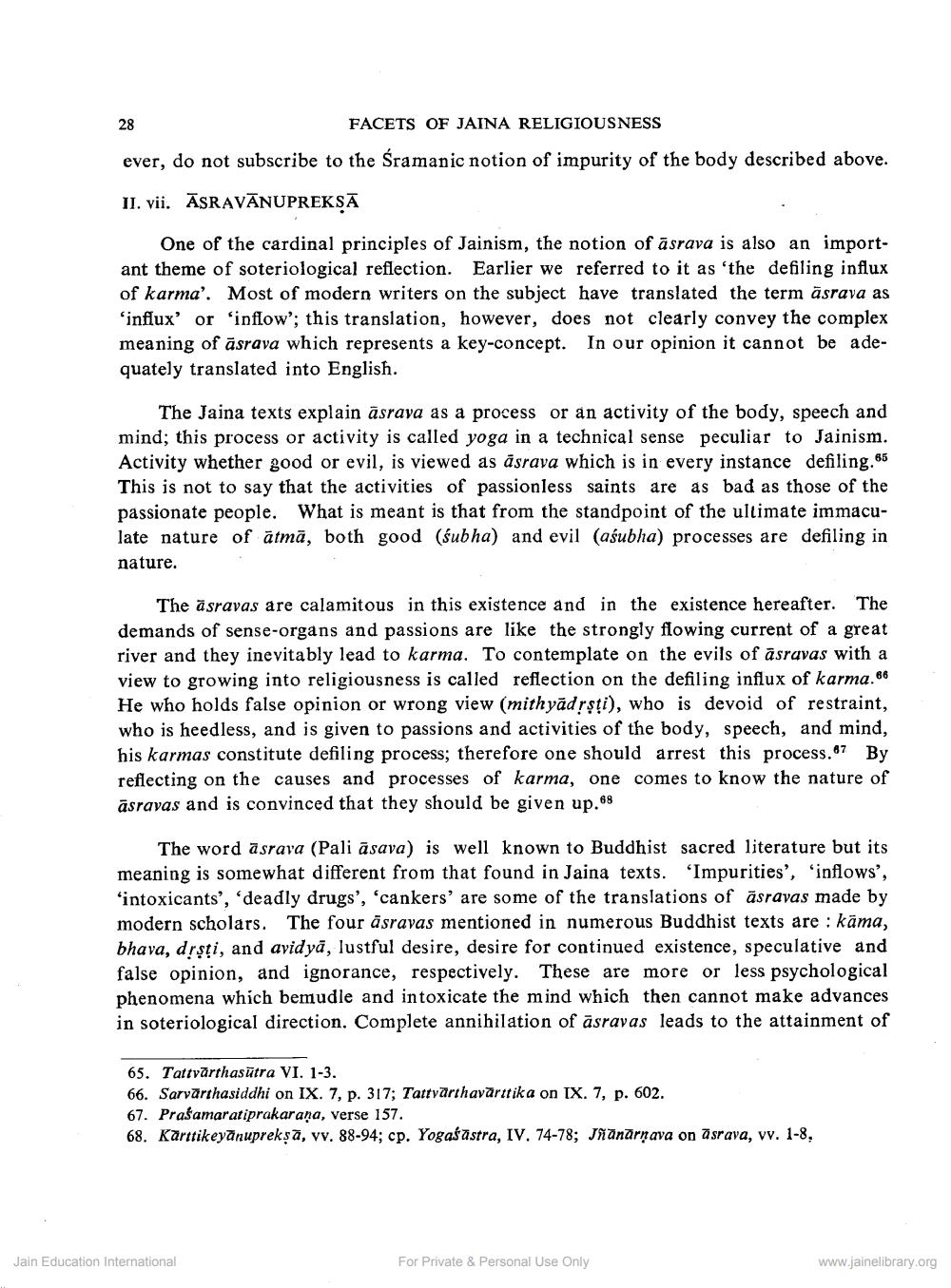________________
28
FACETS OF JAINA RELIGIOUSNESS
ever, do not subscribe to the Śramanic notion of impurity of the body described above.
II. vii. ASRAVĀNUPREKṢĀ
One of the cardinal principles of Jainism, the notion of asrava is also an important theme of soteriological reflection. Earlier we referred to it as 'the defiling influx of karma'. Most of modern writers on the subject have translated the term āsrava as 'influx' or 'inflow'; this translation, however, does not clearly convey the complex meaning of asrava which represents a key-concept. In our opinion it cannot be adequately translated into English.
The Jaina texts explain asrava as a process or an activity of the body, speech and mind; this process or activity is called yoga in a technical sense peculiar to Jainism. Activity whether good or evil, is viewed as asrava which is in every instance defiling." This is not to say that the activities of passionless saints are as bad as those of the passionate people. What is meant is that from the standpoint of the ultimate immaculate nature of atma, both good (subha) and evil (asubha) processes are defiling in nature.
The asravas are calamitous in this existence and in the existence hereafter. The demands of sense-organs and passions are like the strongly flowing current of a great river and they inevitably lead to karma. To contemplate on the evils of asravas with a view to growing into religiousness is called reflection on the defiling influx of karma. He who holds false opinion or wrong view (mithyadṛṣṭi), who is devoid of restraint, who is heedless, and is given to passions and activities of the body, speech, and mind, his karmas constitute defiling process; therefore one should arrest this process.67 By reflecting on the causes and processes of karma, one comes to know the nature of asravas and is convinced that they should be given up."
The word asrava (Pali asava) is well known to Buddhist sacred literature but its meaning is somewhat different from that found in Jaina texts. 'Impurities', 'inflows", 'intoxicants', 'deadly drugs', 'cankers' are some of the translations of asravas made by modern scholars. The four asravas mentioned in numerous Buddhist texts are: kāma, bhava, drşti, and avidyd, lustful desire, desire for continued existence, speculative and false opinion, and ignorance, respectively. These are more or less psychological phenomena which bemudle and intoxicate the mind which then cannot make advances in soteriological direction. Complete annihilation of asravas leads to the attainment of
65. Tattvärthasutra VI. 1-3.
66. Sarvarthasiddhi on IX. 7, p. 317; Tattvärthavarttika on IX. 7, p. 602.
67. Prasamaratiprakaraṇa, verse 157.
68. Kärttikeyanuprekṣa, vv. 88-94; cp. Yogaśastra, IV. 74-78; Jñānārṇava on asrava, vv. 1-8,
Jain Education International
For Private & Personal Use Only
www.jainelibrary.org




